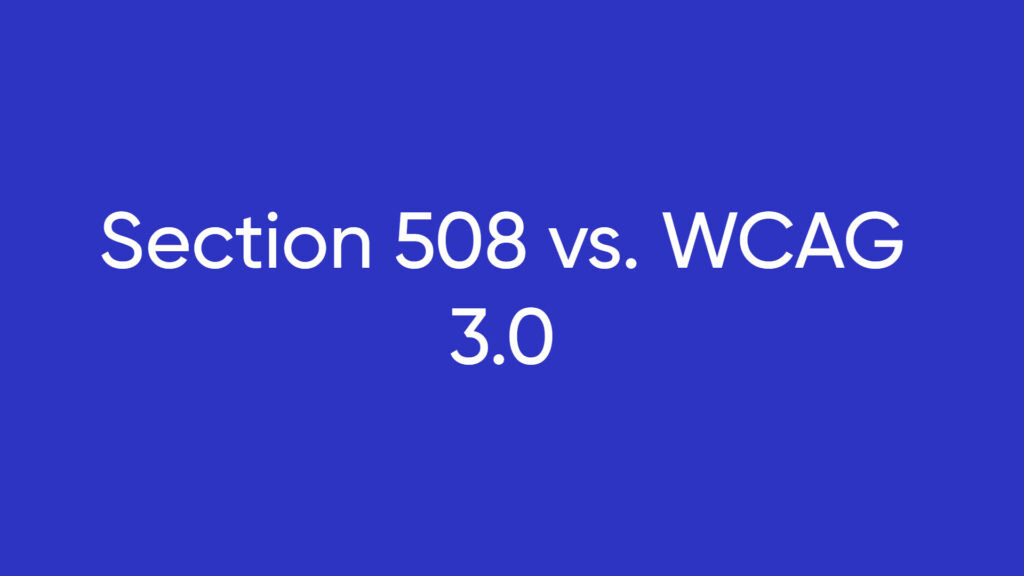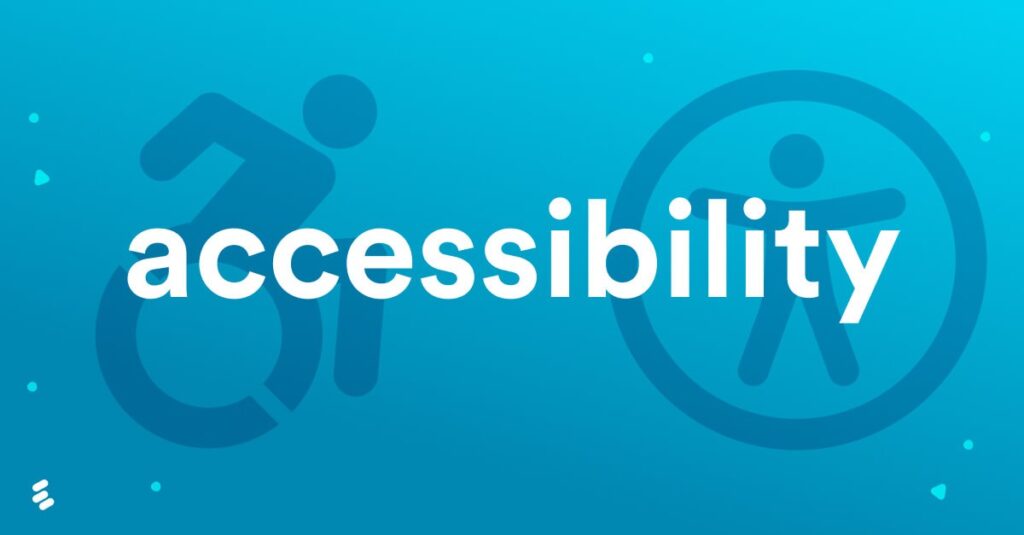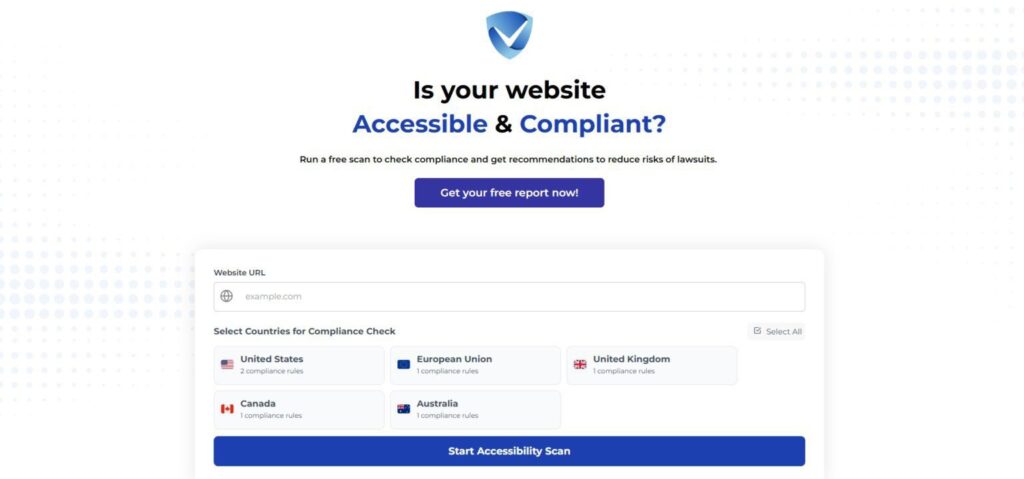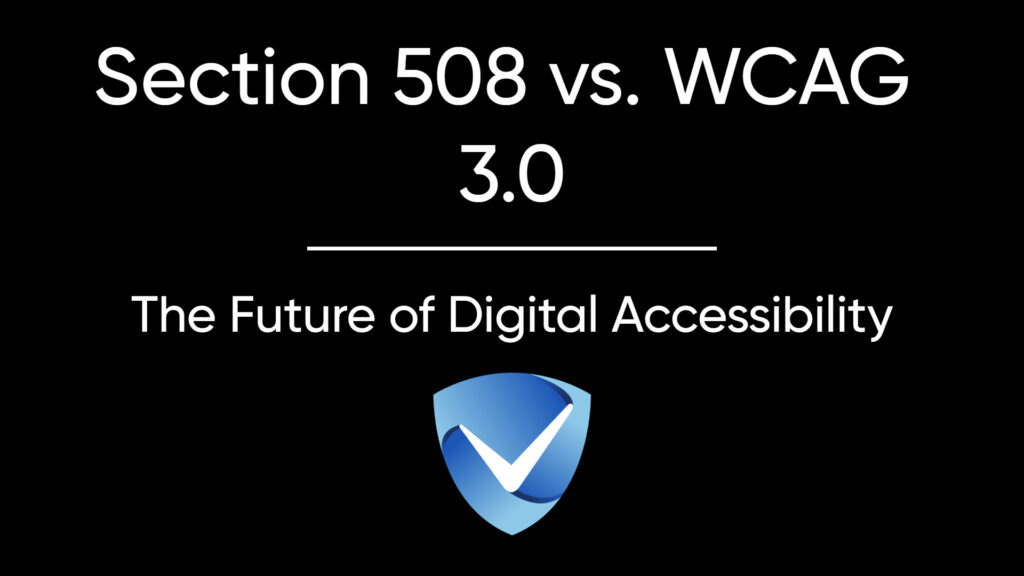Understanding Section 508 and WCAG 3.0
Section 508 is an essential piece of legislation within the United States that mandates digital accessibility for federal agencies and contractors. As part of the Rehabilitation Act of 1973, Section 508 requires that all electronic and information technology developed, procured, maintained, or used by federal agencies be accessible to people with disabilities. This law ensures that individuals can access government services, websites, and information, fostering an inclusive environment for all users. Given its binding nature, non-compliance with Section 508 can potentially lead to legal repercussions for government entities.
On the other hand, the Web Content Accessibility Guidelines (WCAG) serve as the international standard for web accessibility. Developed by the World Wide Web Consortium (W3C), these guidelines aim to make web content more accessible to people with disabilities, thereby enhancing the overall usability of the web. The updated WCAG 2.1, along with the recent evolution to WCAG 3.0, introduces new success criteria and an enhanced focus on mobile accessibility and cognitive disabilities. Unlike Section 508, WCAG is not legally binding but serves as a valuable advisory resource for organizations seeking to improve their digital accessibility.
In comparing their authority, Section 508 is legally enforceable within the U.S. government framework, while WCAG provides a broader, global perspective on best practices for web accessibility. The scope of Section 508 is specifically tailored to federal entities, while WCAG guidelines extend to all web-based content and applications. As organizations begin to navigate digital accessibility, understanding these frameworks is paramount. The developments in WCAG 3.0 may offer guidance to those impacted by Section 508, creating a more unified approach towards fostering accessibility across the digital landscape.

Key Differences Between Section 508 and WCAG 3.0
Section 508 and WCAG 3.0 represent two pivotal frameworks designed to enhance digital accessibility, yet they differ significantly in their legal foundations and compliance methodologies. Section 508 is derived from the Rehabilitation Act of 1973, which mandates federal agencies to ensure that their electronic and information technology is accessible to people with disabilities. Consequently, compliance with Section 508 involves adhering to specific technical criteria outlined in the law, making it a prescriptive standard. This legal framework prescribes exact guidelines that agencies must follow when developing or procuring digital content.
In contrast, WCAG 3.0, developed by the World Wide Web Consortium (W3C), adopts an outcome-based model for assessing accessibility. This standard emphasizes achieving practical accessibility outcomes rather than adhering strictly to specified criteria. The flexibility of WCAG 3.0 allows for a broader interpretation of what accessibility means in various contexts, thus enabling organizations to consider the unique needs of users when striving for inclusivity. This adaptable approach encourages developers to think creatively about solutions to enhance the user experience for individuals with disabilities.
Moreover, the application of these standards extends beyond web content. While Section 508 primarily targets electronic content generated by federal agencies, WCAG 3.0 encompasses a wider array of digital formats, including non-web platforms such as mobile applications and software interfaces. This distinction is vital as organizations across various sectors, including education and commerce, seek to comply with accessibility requirements. Therefore, understanding the nuances between Section 508 and WCAG 3.0 is crucial for compliance officers and web developers to navigate the complex landscape of digital accessibility effectively.
The Evolution of Accessibility Standards
The landscape of digital accessibility standards has undergone significant changes over the years, notably with the introduction and revisions of Section 508 and the Web Content Accessibility Guidelines (WCAG). Section 508, originally enacted in 1998, was designed to ensure that federal agencies’ electronic and information technology was accessible to individuals with disabilities. In 2017, revisions to Section 508 aligned it with WCAG 2.0, emphasizing the importance of adhering to a structured framework to enhance digital experiences for all users. This alignment marked a pivotal shift towards more holistic accessibility practices, allowing different organizations to unify their approach towards compliance.
With the anticipated release of WCAG 3.0, accessibility standards are on the brink of another pivotal evolution. Unlike its predecessors that were more prescriptive, WCAG 3.0 aims to adopt an outcome-based approach that prioritizes real-world user experiences. This modern perspective broadens the definition of accessibility to incorporate a spectrum of diverse user needs, including those with cognitive disabilities, thereby creating a more inclusive environment. In embracing this outcome-oriented framework, Web accessibility standards will also adjust to consider the rise of emerging technologies, such as augmented reality (AR) and virtual reality (VR), which present new challenges for accessibility.
The critical exploration of future updates in accessibility standards will shed light on how these frameworks can adapt to an increasingly digital-centric world. The progressive input from advocacy groups and industries is essential in shaping these standards, ensuring they remain relevant and effective. The transition towards WCAG 3.0 not only reflects a responsiveness to evolving user dynamics but also affirms a commitment to fostering equitable access to digital resources for individuals with disabilities. As the digital environment continues to expand, so too must our standards, ensuring that all individuals can participate fully, regardless of their abilities.

Emerging Technologies and Their Impact on Compliance
The rapid evolution of technology presents both opportunities and challenges for ensuring digital accessibility compliance. With the introduction of advanced tools, particularly artificial intelligence (AI) applications, the landscape of accessibility testing has transformed significantly under the guidelines set forth by WCAG 3.0. These AI solutions can analyze websites and applications for accessibility issues, streamlining the process of identifying barriers for users with disabilities. By automating testing processes, AI enhances the overall efficiency of compliance efforts, allowing organizations to address accessibility concerns more proactively.
Moreover, AI-driven tools can adapt and learn from user interactions, thereby improving their accuracy over time. This adaptability is crucial in aligning with the evolving standards of WCAG 3.0, which aims to be more inclusive of emerging technologies. However, while AI tools can provide valuable insights, they aren’t foolproof. Organizations must still rely on human judgment and expertise to interpret results effectively and implement necessary changes.
The rise of immersive technologies, particularly augmented reality (AR) and virtual reality (VR), has introduced additional complexity in understanding Section 508 compliance. These technologies create unique experiences that can significantly enhance accessibility if designed correctly. However, the interpretation of Section 508 standards within the context of AR and VR poses challenges due to the medium’s inherent differences from traditional digital content. As such, while WCAG 3.0 offers a robust framework for addressing these advancements, the nuances of immersive technology require ongoing dialogue among stakeholders to ensure compliance and accessibility are effectively integrated.
In conclusion, as technology continues to evolve, the interplay between AI tools and immersive experiences necessitates a comprehensive understanding of both WCAG 3.0 and Section 508. This understanding is vital as organizations strive to create digital environments that are not only compliant but truly inclusive for all users.
Preparing for the Future of Accessibility Compliance
As organizations navigate the complexities of digital accessibility, it is essential to adopt a proactive approach to ensure compliance with both Section 508 and the latest Web Content Accessibility Guidelines (WCAG 3.0). To effectively meet these dual compliance requirements, organizations should establish a robust framework that incorporates regular accessibility audits into their operational protocols. These audits serve as a vital tool in identifying accessibility barriers and ensuring that digital assets conform to the standards set by both Section 508 and WCAG 3.0.
Utilizing automated accessibility testing tools can significantly enhance an organization’s ability to measure compliance against these frameworks. These tools can help identify discrepancies and facilitate the remediation of accessibility issues before they become systemic problems. It is also crucial for organizations to integrate manual assessments conducted by accessibility professionals. This combination of automated and manual evaluations enables a comprehensive understanding of an organization’s compliance status, ensuring that all digital products and services are usable by people with disabilities.
Organizations must also remain vigilant regarding the evolving landscape of digital accessibility legislation. For instance, the European Accessibility Act (EAA) represents significant shifts in accessibility requirements that may impact organizations that operate across borders or engage with international audiences. Staying informed about such legislative changes will empower organizations to adapt their strategies, ensuring continued compliance and an enhanced user experience for all individuals.
As digital technology continues to evolve, taking a proactive stance towards accessibility compliance becomes imperative. By conducting regular audits, employing effective tools for assessment, and keeping abreast of legislative changes, organizations can navigate the future of accessibility with confidence, ultimately fostering an inclusive digital environment.

Legislation Driving Change
As digital platforms become increasingly integral to everyday life, the importance of ensuring accessibility for all users has gained significant legislative traction across the globe. The enforcement of the European Accessibility Act (EAA) serves as a pivotal development in this realm, as it establishes clear standards for accessibility that align with a more inclusive design philosophy. The EAA mandates that public sector bodies in the European Union must make their websites and mobile applications accessible to individuals with disabilities, thereby compelling organizations to adopt robust accessibility practices.
In the United States, Section 508 of the Rehabilitation Act has similarly influenced digital accessibility, stipulating that federal agencies must ensure their electronic and information technology is accessible to people with disabilities. As organizations navigate the requirements of Section 508, they are increasingly recognizing the parallels and intersections with broader global standards, particularly the EAA. The interplay between these two sets of regulations not only fosters compliance but also encourages businesses to understand the evolving landscape of digital accessibility as an essential component of user experience design.
Moreover, as the global focus on inclusive design intensifies, businesses that fail to comply with these emerging legislative frameworks may face legal repercussions and reputational risks. The commitment to uphold digital accessibility is no longer optional but rather a necessity driven by current legislative trends. Thus, organizations must prepare for stricter compliance mandates, invest in training, and incorporate accessibility considerations into their design processes. These actions will not only mitigate potential risks but also pave the way for a more inclusive future in which all individuals, regardless of ability, can access digital resources seamlessly.
Try Our Free Website Accessibility Scanner

As organizations navigate the intricacies of digital accessibility, the comparison between Section 508 and WCAG 3.0 becomes increasingly crucial. These frameworks, while distinct in their origins and applications, ultimately aim to create an inclusive online environment for all users, regardless of their abilities. Section 508, a component of the Rehabilitation Act, mandates accessibility for federal agencies, focusing on technology and electronic content. In contrast, WCAG 3.0 represents a broader guideline developed by the World Wide Web Consortium (W3C), addressing the diverse needs of a global audience across various platforms and technologies.
Understanding the differences between Section 508 and WCAG 3.0 is essential for organizations striving to achieve compliance while promoting accessibility. While Section 508 is often seen as a legal requirement for federal entities, WCAG 3.0 sets forth guidelines that can be beneficial for any organization looking to enhance user experience. This intersection of legality and best practice encourages entities to not only fulfill statutory obligations but also embrace a culture of inclusivity that extends to their digital presence.
As new technologies emerge and user expectations evolve, it is imperative that organizations stay informed about advancing standards. The convergence between Section 508 and WCAG 3.0 suggests an impending synergy that will further streamline accessibility efforts. By fostering awareness of these evolving standards, companies can ensure that they remain compliant while empowering users of all abilities to engage with their digital offerings. In light of these insights, organizations must prioritize accessibility as an integral component of their strategies, thereby contributing to a more inclusive digital landscape.
Resources for Further Reading
To further understand the intricacies of digital accessibility, especially in relation to Section 508 and WCAG 3.0, various authoritative resources are available. Utilizing these resources can enhance one’s knowledge about compliance and the implementation of effective accessibility strategies.
The U.S. Access Board provides essential guidance on Section 508. Their official website offers a wealth of documents, including the “Section 508 Standards” and various technical assistance guides. Accessing these resources can empower organizations to create an inclusive digital environment that meets legal requirements and promotes usability for all users, including those with disabilities.
Additionally, the World Wide Web Consortium (W3C), home to the Web Content Accessibility Guidelines (WCAG), offers comprehensive resources that explain the new features in WCAG 3.0. Their documentation includes the “W3C Accessibility Principles,” which outline the foundation principles of accessible design. This is beneficial for developers and content creators who need to align their websites with the latest standards.
For those seeking interactive learning, several online platforms host courses focused on accessibility. Websites like WebAIM provide tutorials and training modules tailored to both beginners and advanced practitioners of web accessibility. These courses often cover practical applications of Section 508 and WCAG standards, making them instrumental for professionals aiming to enhance their skills.
Moreover, government resources such as the Federal Digital Strategy may also offer insights and updates on digital accessibility compliance within federal agencies. Keeping abreast of these developments ensures that organizations remain compliant with evolving standards.
In summary, leveraging these resources will not only facilitate a deeper understanding of Section 508 and WCAG 3.0 but also aid in the practical application of these guidelines, thereby supporting the overall goal of building accessible digital platforms.
Expert Voices in Digital Accessibility
The field of digital accessibility is rapidly evolving, prompting a need for continuous dialogue among experts. Notable voices in this domain emphasize the significance of comprehensive compliance efforts. For instance, Dr. Sarah Johnson, an accessibility research scholar, highlights that “ensuring accessibility is not just a legal obligation but a moral imperative that aligns with the values of inclusivity.” Her perspective reflects a growing awareness that digital platforms must serve all users, including those with disabilities, ensuring equitable access to information and services.
Organizations specializing in digital accessibility compliance, such as the International Association of Accessibility Professionals (IAAP), advocate for best practices in creating accessible digital content. Their executive director, Mark Reed, notes that “adhering to standards like WCAG 3.0 is crucial for fostering digital inclusivity. However, it is equally important that organizations engage in ongoing training to better understand the unique needs of users with disabilities.” This sentiment underscores the necessity for stakeholders to be well-informed and adept at implementing the principles of accessibility within their projects.
Moreover, advocates like Ellen Carter, a prominent disability rights activist, stress the importance of user feedback in shaping accessible designs. “People with disabilities are the best experts on their experiences. Collaborating with them in the design process ensures that our digital environments cater effectively to their needs,” Carter states. This approach not only enriches the design process but also empowers users to actively participate in shaping the tools they rely on.
In summary, the insights provided by these experts and organizations reflect a unified message: achieving digital accessibility is a collaborative effort that requires commitment, continuous learning, and adaptation. Embracing these principles through ongoing dialogue will pave the way for a more inclusive digital landscape.
FAQs About Section 508 and WCAG 3.0
As organizations strive to create inclusive digital environments, many individuals seek clarity on the nuances of Section 508 and WCAG 3.0. This section addresses some of the most frequently asked questions regarding these digital accessibility standards.
What are Section 508 and WCAG 3.0? Section 508 is a U.S. federal law that mandates accessible electronic and information technology for individuals with disabilities, ensuring equitable access to government resources. Conversely, the Web Content Accessibility Guidelines (WCAG) 3.0 are a set of international accessibility standards established by the World Wide Web Consortium (W3C) aimed at improving web accessibility for individuals with diverse disabilities globally.
What are the compliance requirements for Section 508? Compliance with Section 508 involves adhering to specific technical standards that focus on making electronic content accessible. This includes ensuring that all digital information and services provided by federal agencies are usable by individuals with disabilities. Organizations must perform regular assessments and audits of their digital assets to guarantee compliance.
How does WCAG 3.0 differ from prior versions? WCAG 3.0 introduces a more comprehensive approach to accessibility. It encompasses a wider range of user experiences and offers greater flexibility in meeting accessibility goals. Notably, it incorporates new guidelines that address a broader spectrum of disabilities beyond just visual and auditory impairments, ultimately guiding developers in creating more user-friendly digital experiences.
What are the implications of failing to meet accessibility standards? Non-compliance with Section 508 or WCAG 3.0 can have significant consequences, including legal action, financial penalties, and reputational damage. Additionally, failing to prioritize accessibility can alienate users with disabilities, limiting their ability to access essential services effectively.
What are best practices for ensuring digital accessibility? Organizations should prioritize accessibility from the outset of the design and development process. This includes conducting regular accessibility audits, involving users with disabilities in testing, and providing training for staff on accessibility standards and practices. By fostering a culture of inclusivity, organizations can enhance their digital environments and ensure compliance with both Section 508 and WCAG 3.0.



